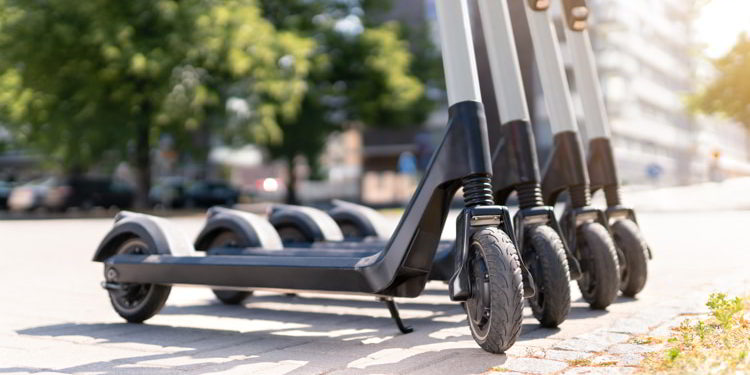A new eco-friendly mode of transportation is taking Panama by storm.
My daily commute to work leaves little time for observation. It takes me three full songs on the radio from when I pull out of my building’s parking lot until I get to the office. But in that short amount of time, I’ve started to notice something unusual—the increasing number of people I see on electric scooters.
Outside of trendy Costa del Este, I’d never seen a person wearing work clothes while riding a scooter in Panama. But this morning in El Cangrejo, I counted five…
The Hub of the Americas is home to 4.3 million people and a large part of the population resides in Panama City. This translates into traffic… and lots of it. If you’ve ever been stuck in traffic in Los Angeles, Panama City rush hour will make you feel right at home.
Spending hours in tranque, while gas prices seem to go up every time you blink…
Trying to avoid potholes and drivers with road rage…
None if it sounds like the ideal overseas-living dream.
This is why both expats and locals are looking for alternatives and embracing this new means of transportation.
Though you may think this is nothing new, Panama hadn’t yet adopted this First World invention. As a born-and-raised Panamanian I can tell you that we’re not a very “step-out-of-your-comfort-zone” people, at least not right away.
Scooter companies set up shop here thinking they would innovate, but actually struggled for a while. Few people were buying scooters because they thought them overpriced toys rather than an alternative transportation method.
In the current global gas crisis, only the brave survive… and Panamanians have finally warmed up to the idea of leaving their cars at home and hopping on scooters instead. There’s now a mix of expats and locals riding their scooters wherever possible.
In a city unprepared for a wave of scooters (even a new law had to be implemented), you’re bound to bump into a couple of issues…
The quality of Panama’s infrastructure varies by area of the city. In some places you’ll find cracked sidewalks, cars parked on the sidewalk, giant potholes, and when it rains… God have mercy on us all because the streets turn into lakes.
Living in a developing country means putting up with the “developing” part of it. There may be giant holes in the roads now, but it won’t stay that way forever.
Get Your Free Panama Report Today!
Simply enter your email address below and we'll send you our FREE REPORT - Live And Invest In Panama: The #1 Retirement Haven In The Americas.
Adapt and conquer, right?
We don’t have perfect infrastructure for scooters yet, but we do have the very efficient metro. Realizing that more and more people were boarding the trains with scooters, Metro de Panama decided to add a new regulation: If you use a bike or scooter you must board the last wagon.
During rush hour these contraptions aren’t allowed in any wagon, and you definitely can’t ride them within the station or train. Electric scooters are portable and fold to fit inside a duffel bag, which means you could probably get by unnoticed if your scooter is properly stowed.
Its compact form is just one of the many benefits of the electric scooter. It’s also a money saving machine. You could save more than US$200 a month just by switching from a car to a scooter.
While economizing is great for your wallet, a scooter is meant to be a complimentary means of transportation due to its limitations in speed and the distance it can travel.
The new law states that scooters can’t legally go over 30 kms per hour on sidewalks and if the scooter weighs over 300 kgs and goes over 45 kms per hour, it’s considered a bicycle.
By using public transportation and a scooter, you’ll save yourself cash and help protect the environment. The gas your car emits in a day is equivalent to what an electric scooter emits in five years!
You don’t have to purchase a scooter, there are rental options through apps like Bird that allow you to hop on when you need to and hop off when you’re done.
Depending on where in the city you’re headed, you may run into accessibility issues, but again, it won’t be that way forever. For the time being, there are areas with designated bike lanes. The best place to transit via scooter or bike is along the Cinta Costera until you reach Vía Israel. There’s also a ciclovía on Via España, though you should always be on the lookout for pedestrians who don’t pay attention to road signs and walk where they’re not supposed to.
This morning I spotted 5 scooter-riders, by next month maybe I’ll see 10… who knows. What I do know is that for every negative situation like rising gas prices and a deteriorating climate, a solution can be found.
Each day, more people opt to keep extra money in their pockets by using electric scooters and in turn, consciously or unconsciously help the environment.
Would you be willing to give the electric scooter a try?
Geraldine Gonzalez
Panama Insider










